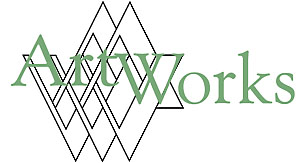
 |
Spring 2003 |
|
A textile artist takes his show on the road ADA: Arts for All ORBI to sponsor May ADA workshop From the Director Artist Fellowship winners announced MAAF update Strictly business Are children being left behind? Griffin wins national award Bringing writers together WV Writers annual conference |
Response, regulations, resourcesToo often, cost looms as a “tall wall against change” when a new facility is in planning stages or when aging facilities need improvements. On the other hand, making art infrastructure accessible to all might be the first step toward boosting return on your investment in marketing and advertising. Would you like to increase your attendance by ten percent? New resources can help make improvements — and ADA compliance — possible. We can share success stories about accessibility and “know-how” about capital projects. For information about the Cultural Facilities and Capital Resources Grant Program and the Fast Track Emergency and ADA Grant Program, call 304-558-0240; ask for Rose McDonough at extension 152 or Richard Ressmeyer at extension 721. Several organizations received funding in 2002 for accessibility and ADA compliance through the Cultural Facilities and Capital Resources Grant Program: Boarman Arts Center: The first phase of this multi-phase project was to address ADA compliance and universal design. An accessible restroom, ramp and entrance vestibule were built, and door hardware was upgraded to meet ADA requirements. Carnegie Hall: This renovation project completed the overall Renaissance Capital Campaign that addressed barrier removal for ADA compliance, the installation of an elevator and accessible walkways and entrances. Shepherdstown Men’s Club: The project involved improvements to the War Memorial Building, constructed in 1868, including additional entrances for people with disabilities and a lift to allow access to the ballroom and kitchen. Charleston Stage Company: The group purchased equipment for audio description, assistive listening systems and a TTY phone system to expand and diversify the audience base and to improve communication to artists and customers. Oglebay Institute: This organization installed an accessible unisex restroom as well as an elevator to allow access to the archival room, multipurpose exhibition and programming room. The new construction blends architecturally with the existing historic facility. The Aurora Project: This project, currently in the initial phase, focuses on design, infrastructure and interior/exterior restoration of three buildings. Upon completion, living and working space will be available for five artists to begin six-week residencies. The goal is to create a facility that is open and welcoming to all artists using universal design and planning. Randolph County Community Arts Center: A church is being transformed into a community arts center. Renovations include accessible restrooms. Cultural Center of Fine Arts: This organization’s multi-phased project includes upgrading of the elevator and renovation of restrooms to ADA compliance. |